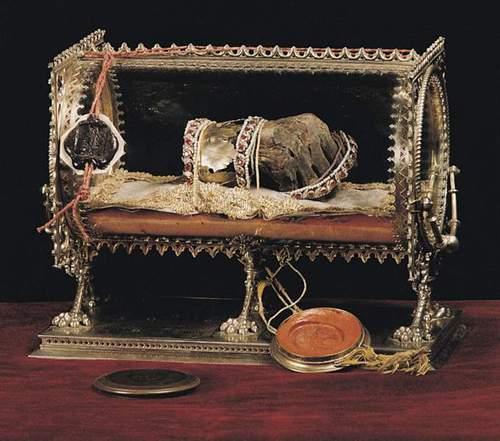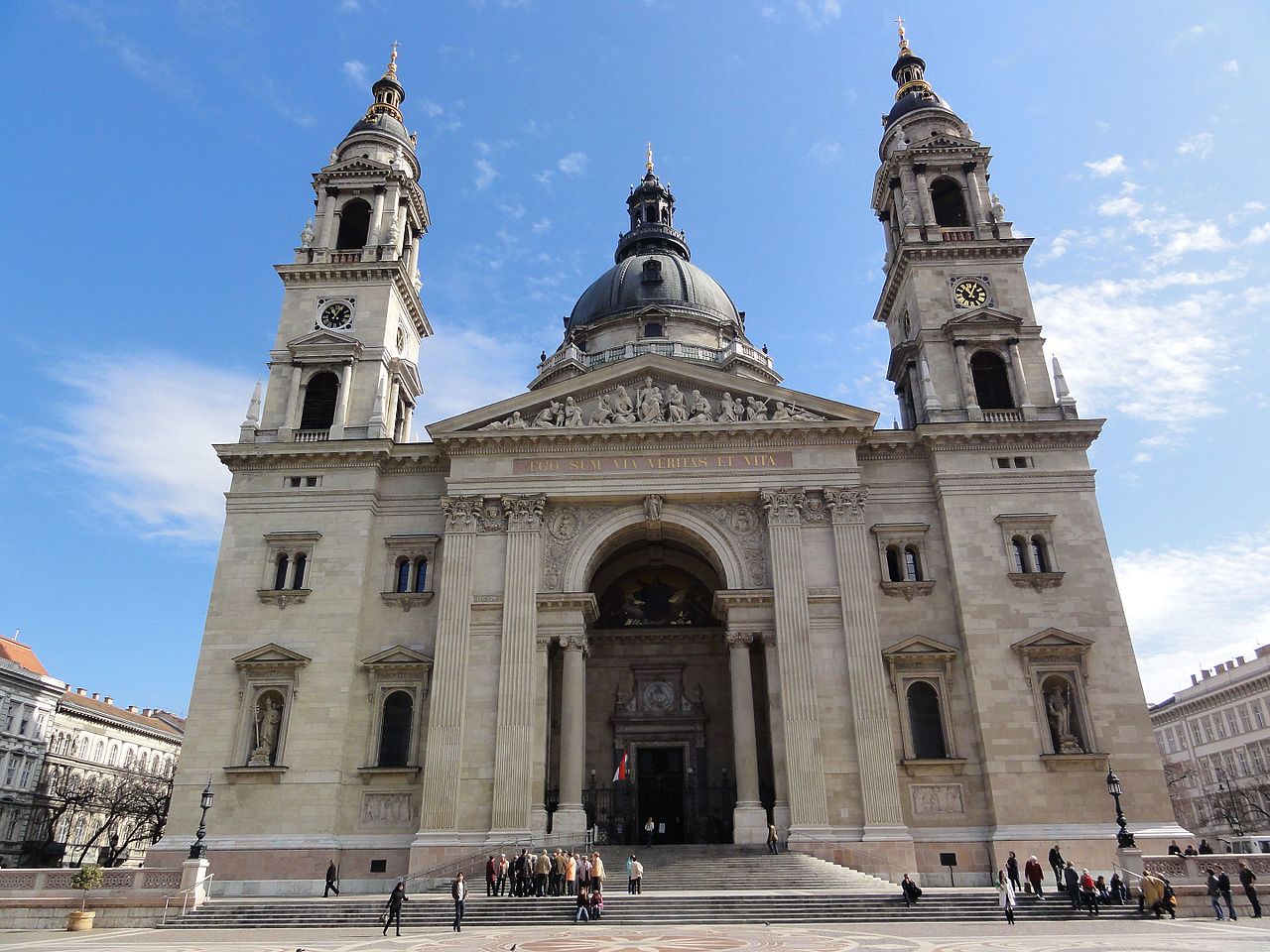The troubled history of the Holy Right, the mummified hand of Hungary’s first king
There is a curious detail about Hungary’s grandiose 20 August celebrations: the right hand of Saint Stephen, the first king who founded the state of Hungary, is still the main symbol of the annual events to celebrate the birth of our nation.
As written by Vasárnap, the story of the famous right hand, the “Holy Right” began with the canonisation of Stephen I in 1083. Upon opening the king’s crypt in Székesfehérvár – still referred to as the city of kings today –, it was discovered that the limb was in intact condition, and so it was removed from the rest of the body. It was also believed at the time that the arm had miraculous properties.
But even though the Holy Right is considered an essential relic of Hungarian history today, it took long centuries before it found its way back to its country of origin. During the Ottoman occupation, it was guarded by the Dominican monks of Ragusa in Dalmatia until 1771, when the Austro-Hungarian empire took it. Thanks to an order by Maria Theresa, the Holy Right was first brought to Schönbrunn, then it eventually found its way back to Buda.

Photo: Farkasven/Wikimedia Commons
From 1860 onward, there would be a procession on 20 August every year at the castle of Buda, to celebrate the day Stephen I (or, after his canonisation, Saint Stephen) founded the state of Hungary in 1000. There was no abruption until the Second World War when, in 1945, members of the Arrow Cross Party took the relic to the city of Mattsee in Salzburg. Processions were still held until 1947 when the church was banned from holding any march of the kind.
Finally, on 20 August the same year, the relic was brought back to Hungary by the priest of the American army. First, it spent five years at Saint Michael Church in Budapest, after which it was guarded in the home of the vicar at Saint Stephen’s Basilica. Today, it is the imposing church itself that gives shelter to the Holy Right.
Processions were allowed again in 1989, a year after the 950th anniversary of the king’s death when, for the first time, the Holy Right was taken on a tour across the country. Since then, the Holy Right procession is a central part of the 20 August celebrations every year.
Photo: Saint Stephen’s Basilica in Budapest, where the Holy Right resides today.

Read alsoProgram guide for the 20 August long-weekend
Source: vasarnap.hu
please make a donation here
Hot news
What happened today in Hungary – 26 July, 2024
Drama: number of births in a 20-year low in Hungary
Yay or nay? – 6 odd Hungarian delicacies that make our skin crawl
Budapest tourism “exploded” this past weekend
Container transport in Budapest may stop: How will this affect Hungarian economy?
Minister: Hungary will protect its territory by every means possible





6 Comments
Actually, 1988 was the 950th anniversary of the king’s death, not birthday. And the foundation of the kingdom was on 20 august 1000 , not 1038….
Thanks a lot for the interesting article and happy St. Istvan !
Mario, the canonization of King Stephen was in 1038
Anonymous, I was not referring to the canonization. I was only correcting some dates in the article ( now revised )
Thank you Barbara Simon and Mario for this interesting article of the Holy Right of St. Stephen. I was at the 10 o’clock Mass yesterday at St. Stephen’s Basilica were the Holy Right was displayed. I want to just add that the part of the story of St. Stephen’s crown and how it was saved towards the end of WWII was also part of the MNB “Ghost Train” story. The Crown was stored in the MNB vault at Vesprem along with the National Treasures and all 30 tons of gold reserves of the National Bank. It was from Vesprem the the Crown and the gold and National treasures went secret separate ways before winding up in American Army hands about the same time.
The story of the Tarnay Family and the Ghost Train of the National Bank of Hungary ( Ghost train is used to distinguish the MNB train from the more popular story of the Jewish looted Gold Train that was also on another route at about the same time). This “Ghost Train” story is told in the book “A Carpathian Folk Song: Freedom, Love, Gold”. The book includes un-disputable collection of documents, photos and letters that give credence to the story. The heroes and heroine of the story are my father, my mother and the close relationship with the German Commission who put his life on the line in acts of defiance against the Hitler”s Reich to help save the gold and National treasures of Hungary. A youtube trailer of a recent Documentary of the story is: https://www.youtube.com/watch?v=WKm3iHjtbXE
Thank you, Steve Tarnay, for sharing such an interesting story!
Good to see additional details of the WWII journey of The Holy Right and the National Treasures. To hear a firsthand account of the US Army locating the items in Mattsee, read “Howitzers, Grasshoppers, and the Holy Right Hand: the wartime experiences of Captain Harold E Brown.” Brown was in the room of the preist’s house in Mattsee when the non-descript shipping crate was opened, and inside were The Holy Right, the Crown Jewels, and other items of the National Treasures. His story sheds light on a previously unknown period of time.